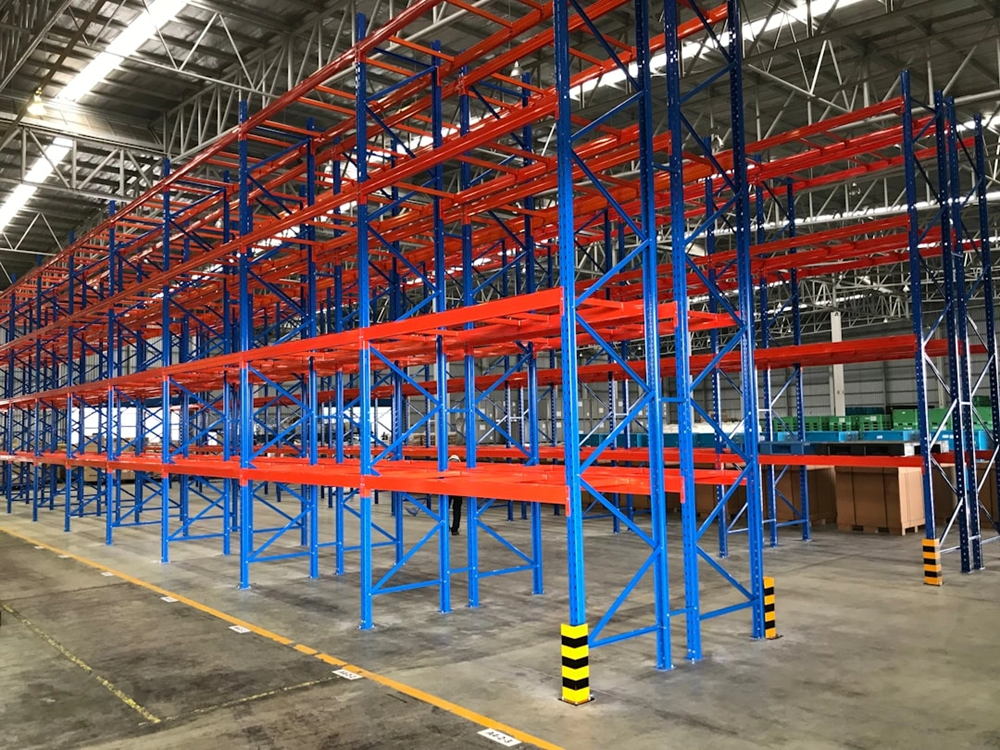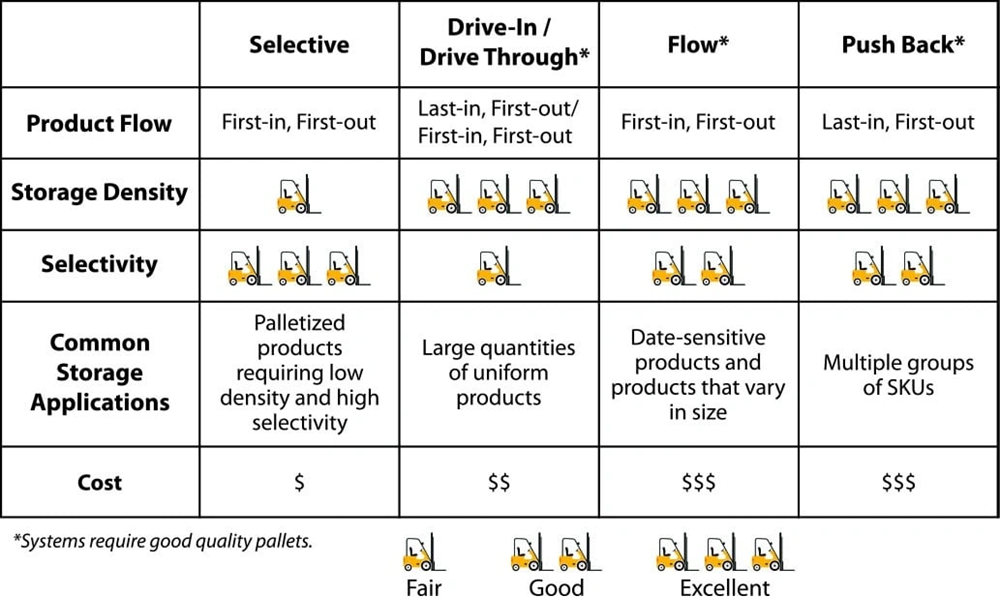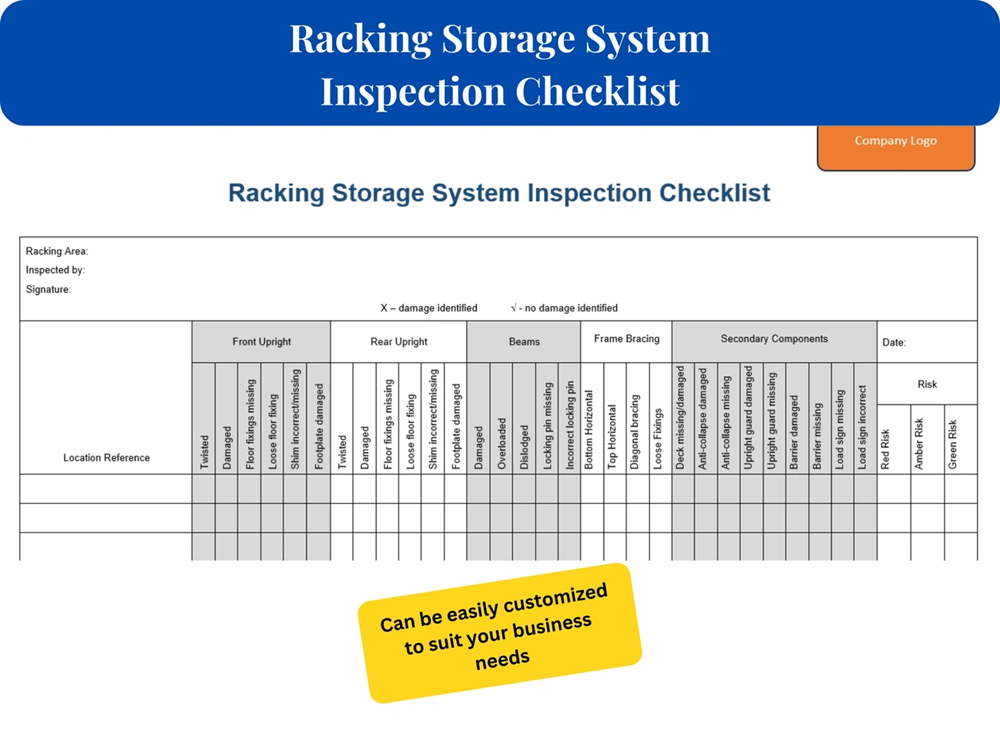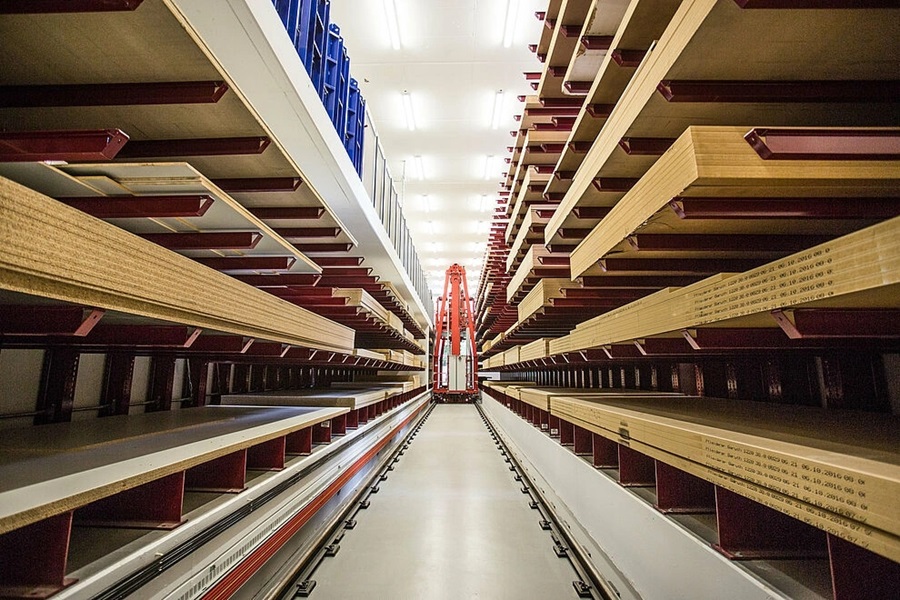
Warehouse rack companies play a crucial role in today’s fast-growing market. Industry projections show the market will reach over $14 billion by 2033, with a CAGR of 4.12%. The pallet racking segment shows even stronger potential and will expand at 9.31% CAGR by 2033 . But choosing the wrong warehouse racking partner can get pricey and affect operational efficiency, safety, and end up hurting your bottom line.
Companies looking for the right warehouse rack and shelf provider need more than just equipment suppliers – they need strategic collaborations. Throughout America, businesses of all sizes, from small startups to Fortune 500 corporations, depend on 20-year-old providers like Warehouse Rack Company, LP to deliver resilient storage infrastructure . The warehouse racking company you choose will affect your space utilization, workplace safety, and long-term scalability. This piece gets into why your warehouse rack company decision matters and helps you avoid expensive mistakes that could cost your business thousands in unexpected expenses.
The hidden costs of choosing the wrong warehouse rack company
Picking a subpar warehouse rack company will get pricey beyond what you see in the original quotes. These hidden costs can affect your bottom line a lot over time. What looks like a good deal now might become a financial nightmare later.
Unexpected maintenance and repair expenses
Poor rack maintenance will end up causing expensive replacements and accidents. Most businesses don’t realize that 62% of racking damage comes from forklift impacts. These impacts weaken structural integrity by 18-34% and triple future maintenance costs. The environment plays a vital role, too. Warehouses with humidity levels above 60% see corrosion speed up by 300%, which cuts rack lifespan by 5-7 years.
You need to watch for bent beams, dented uprights, or loose components. These signs tell you your racking system needs a full assessment. Regular preventive maintenance protects you from surprise expenses and helps your equipment last longer with fewer disruptions.
Inefficient space utilization and lost revenue
Bad warehouse racking layouts directly hurt your operational efficiency. Your operational costs can jump up by 30% just from wasted storage space. Labor costs eat up to 70% of warehouse operational expenses, so employee efficiency becomes vital to your profits.
Messy systems create bottlenecks. Workers waste time looking for products, make picking mistakes, and ship orders late. Customers get frustrated. These small delays add up fast – minutes of searching turn into thousands of wasted labor hours each month. This waste takes a huge bite out of your potential revenue.
Safety risks and compliance penalties
Safety violations might be your biggest hidden cost. OSHA fines run from $5,000 to $161,000 based on how serious the violation is. These penalties can reach $15,625 per single violation as of 2023. Even worse, someone could go to jail if a worker dies because of a violation.
Beyond the fines, warehouse injuries cost businesses over $84 million yearly in medical bills, lost productivity, and insurance claims. Overloaded racks can collapse catastrophically. Your operations could shut down and your reputation could take a serious hit.
The right warehouse rack and shelf company will give you more than just compliance – it guides you toward long-term success. Professional partners design systems that fit your specific needs. They help you dodge these expensive problems through proper installation, maintenance advice, and ongoing support.
Understanding different warehouse racking systems

Choosing the right warehouse racking system depends on how well each design solves your storage challenges. Our experience as shop fitting specialists has shown us how the right racking solution can optimize operations.
Selective pallet racks
Selective pallet racks are the most common storage solution that gives you 100% access to every pallet. These racks work best in warehouses that handle many SKUs with frequent rotation needs. The simple structure of frames and beams lets you access pallets directly without moving others. You’ll need more aisle space than compact systems, but these racks give you unmatched inventory control and visibility.
Drive-in and drive-through racks
Drive-in and drive-through racks help you store more by cutting down on aisles. Forklifts enter from one side in drive-in systems (LIFO inventory method), while drive-through setups allow access from both ends (FIFO method). Your storage capacity can jump by over 50% compared to regular racking. Cold storage facilities or warehouses with similar products benefit most from these systems.
Push back racks
Push back racking boosts storage efficiency by holding pallets 2-5 deep while keeping them accessible from a single aisle. The system uses inclined rails with nested carts that naturally move remaining pallets forward when you remove front units. Your forklift operators face lower collision risks compared to drive-in systems.
Pallet flow racks
Pallet flow systems work with gravity-fed rollers on slight inclines (about 4% slope). Pallets move on their own from the loading point to the picking face. The design supports FIFO inventory management with loading and retrieval happening at opposite ends. Many facilities cut their pallet handling time by half.
Cantilever and mezzanine systems
Cantilever racks use horizontal arms that extend from vertical columns. The design removes front obstacles, making it perfect for storing long items like lumber or pipes. Mezzanine systems create extra floors between ground level and ceiling, adding usable space without expanding your building. These elevated areas work well for various setups, from shelving to temporary workspaces.
Our commercial shop fitting expertise helps merge each racking solution into your warehouse design, lifting both functionality and space usage.
How to evaluate a warehouse rack company before buying

Choosing the right warehouse rack companies needs more than just comparing prices. Our 12+ years in shop fitting have taught us what matters to avoid mistakes that can get pricey.
Check for industry certifications and safety compliance
Companies with R-MARK certification should be your top choice. This certification shows they meet RMI’s strict quality standards. OSHA compliance isn’t optional – violations can lead to fines between $5,000 and $161,000 based on how serious they are. The best providers keep their certifications current and design racks that meet local building codes and seismic requirements.
Assess experience with your warehouse type
Your supplier’s knowledge of your industry will make a big difference. Good providers know what different sectors need – from cold storage facilities to retail distribution centers. Take a good look at their past work to make sure they’ve handled projects like yours successfully.
Review installation and support services
The right installation keeps you safe and follows manufacturer guidelines. Quality providers work with licensed contractors who know the proper anchoring techniques and stick to OSHA protocols. Regular inspections and maintenance programs protect what you’ve invested. Remember, ANSI/RMI standards clearly state that rack maintenance is your responsibility.
Compare pricing transparency and warranties
Warranties usually run from 1-10 years, showing how much faith manufacturers have in their products. Most standard systems come with five-year warranties against defects. Advanced systems might protect you for up to a decade. Make sure your warranty covers structural defects, functionality, and corrosion protection – not just manufacturing problems.
Look for customization and scalability options
The best warehouse rack and shelf companies grow with your business. Special features like temperature-resistant coatings for cold storage or seismic bracing add value, even though they raise your original costs. Smart providers design systems that work with future automation and warehouse expansion.
Our shop fitting experience has taught us that picking the right partner means looking at all these factors, not just going with the lowest price.
Future-proofing your investment with the right partner

Selecting a warehouse rack company that understands future needs is a vital part of today’s faster-evolving logistics world. The warehouse racking market will grow at a 3.3% CAGR to reach $11,128.1 Million by 2035.
Why automation compatibility matters
Automation integration plays a key role in modern warehouses. Robotic systems, Automated Guided Vehicles (AGVs), and drones handle inventory and optimize storage effectively. Warehouses that combine racking with AGVs see labor reductions of up to 60% in high-volume operations. Pallet racking supporting conveyor lines can merge within the racking structure to streamline processes.
Benefits of modular and eco-friendly racking
Modular racking systems provide unique adaptability that lets businesses reconfigure quickly as needs change without expensive updates. These systems boost storage capacity by up to 40% through improved space utilization. Sustainable racking solutions made from recycled materials like steel help achieve environmental goals and reduce waste generation.
How JY Shop Fitting supports long-term growth
JY Shop Fitting brings 10 years of manufacturing experience to create customized racking solutions. Their systems combine innovative technology with storage solutions ready for tomorrow’s challenges. The company’s expertise in designing modular, flexible configurations helps warehouses adapt to changing market needs while keeping operations efficient.
Conclusion
Your choice of warehouse rack company can impact your finances for years to come. Poor choices lead to endless maintenance issues, inefficient layouts, and safety violations. Businesses just need to do their homework before they pick a racking provider.
Quality warehouse racking solutions improve operations and cut long-term costs. Systems that grow with your business and work with new technology give you better returns than quick fixes for today’s problems. The gap between a well-planned warehouse and one that doesn’t work right can cost you thousands—maybe even millions—of dollars down the road.
Safety stays at the top of the list when you look at warehouse rack companies. The right systems keep your workers safe and protect your business from big OSHA fines and legal troubles. A single rack failure could shut down your operation and drain your bank account.
JY Shop Fitting brings 12 years of specialized manufacturing expertise to solve these challenges. We look at every detail of your warehouse project and build racking systems that work for you now and later. Our deep knowledge of storage solutions helps clients in a variety of industries, from retail distribution centers to industrial facilities.
Picking the right warehouse racking ended up being more than buying equipment—it builds the base for your success. Companies that put quality, compliance, and adaptable solutions first when choosing their warehouse rack provider will stay ahead in today’s tough market. Your warehouse infrastructure deserves expert setup from professionals who know today’s challenges and tomorrow’s opportunities.
Key Takeaways
Choosing the wrong warehouse rack company can lead to devastating hidden costs that compound over time, from unexpected maintenance expenses to safety violations and operational inefficiencies.
• Poor rack selection increases operational costs by up to 30% through inefficient space utilization and wasted labor hours • OSHA safety violations can result in fines ranging from $5,000 to $161,000, plus potential imprisonment for fatal incidents • Quality warehouse rack companies provide R-MARK certification, transparent warranties, and proven experience in your specific industry • Future-proof racking systems with automation compatibility and modular design can reduce labor costs by 60% in high-volume operations • Professional installation and ongoing maintenance support protect your investment and ensure long-term operational success
The warehouse racking market’s projected growth to $14 billion by 2033 reflects increasing demand for strategic storage solutions. However, this growth also means more options—and more opportunities to make costly mistakes. Businesses that prioritize safety compliance, scalability, and proven expertise when selecting their warehouse rack partner will avoid the expensive pitfalls that plague companies focused solely on initial cost savings.
FAQs
Q1. What are the key factors to consider when choosing a warehouse rack company? Important factors include industry certifications, experience with your warehouse type, installation and support services, pricing transparency, warranties, and customization options. Prioritize companies with R-MARK certification and OSHA compliance to ensure safety and quality standards are met.
Q2. How can poor rack selection impact warehouse operations? Inefficient rack selection can increase operational costs by up to 30% due to wasted storage space and reduced employee productivity. It can also lead to safety risks, compliance penalties, and unexpected maintenance expenses, significantly affecting your bottom line over time.
Q3. What are the most common types of warehouse racking systems? The main types include selective pallet racks, drive-in and drive-through racks, push back racks, pallet flow racks, and cantilever systems. Each system has unique advantages and is suited for different warehouse needs and product types.
Q4. How important is automation compatibility in warehouse racking? Automation compatibility is crucial for future-proofing your warehouse. Racking systems that support integration with robotic systems, AGVs, and conveyor lines can reduce labor costs by up to 60% in high-volume operations and significantly improve efficiency.
Q5. What are the potential consequences of safety violations in warehouse racking? Safety violations can result in OSHA fines ranging from $5,000 to $161,000, depending on the severity. More critically, they can lead to worker injuries, operational shutdowns, and even imprisonment in case of fatal incidents. Proper rack selection and maintenance are essential for ensuring workplace safety and avoiding these costly penalties.

